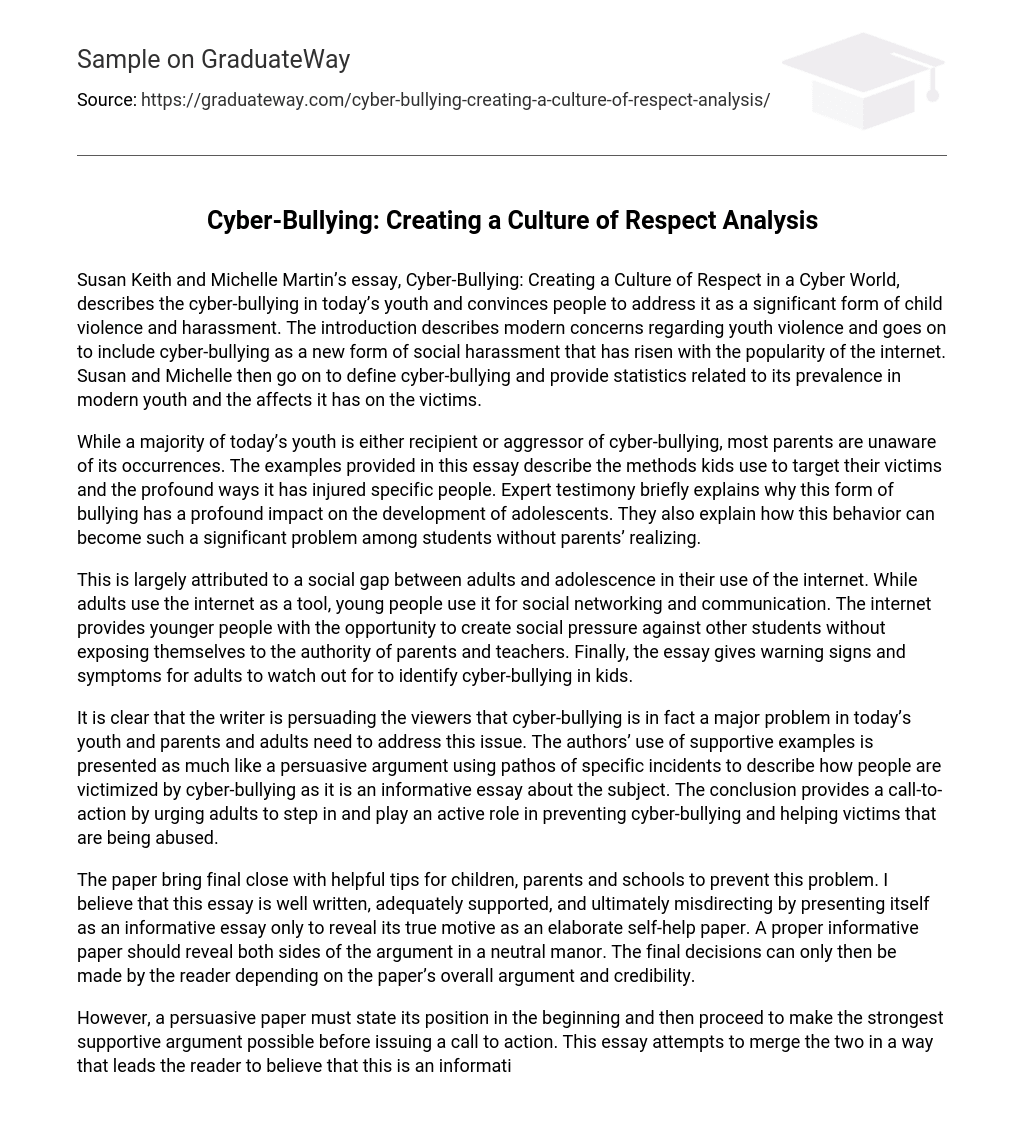Susan Keith and Michelle Martin’s essay, “Cyber-Bullying: Creating a Culture of Respect in a Cyber World,” highlights the importance of addressing cyber-bullying as a significant form of child violence and harassment. The essay introduces the concerns surrounding youth violence today, specifically emphasizing the rise of cyber-bullying alongside the increasing popularity of the internet. Furthermore, the authors define cyber-bullying and present statistics to illustrate its prevalence among modern youth and the detrimental impacts it has on its victims.
Today, many young people are victims or perpetrators of cyber-bullying, yet most parents are unaware of this issue. This essay illustrates various tactics used by children to target their victims, highlighting the severe consequences it has on individuals. Expert testimony highlights why cyber-bullying profoundly affects adolescent development and how parents often remain unaware of the extent of this problem among students.
The use of the internet differs greatly between adults and adolescents, largely due to a social gap. Adults primarily utilize the internet as a practical tool, whereas young people mainly engage in social networking and communication. This difference in usage provides younger individuals with a platform to exert social pressure on their peers without having to answer to parents or teachers. Additionally, the essay outlines indicators and symptoms that adults should be vigilant for in order to detect instances of cyber-bullying in children.
The writer’s intention is to persuade viewers about the severity of cyber-bullying in today’s younger generation and emphasize the importance for parents and adults to address this problem. To accomplish this, the writer uses examples that serve as both persuasive arguments, appealing to emotions by showcasing how individuals suffer from cyber-bullying, and informative elements on the subject matter. In conclusion, the essay urges adults to take action by actively intervening in preventing cyber-bullying and helping its victims.
The essay concludes by providing helpful suggestions for children, parents, and schools to tackle this problem. In my view, the essay is expertly crafted and thoroughly backed up. Nevertheless, its genuine purpose as a self-help article becomes evident, despite initially posing as an informative essay. An informative document should ideally present both perspectives of the debate in an impartial way. This allows the reader to make informed choices based on the overall argument and credibility of the paper.
However, a persuasive paper begins by stating its position and then providing the most compelling supporting argument before urging action. This essay aims to combine the two approaches, presenting itself as an informative piece about how modern technology has facilitated unrestricted cyber-bullying by avoiding adult and authoritative intervention. Ultimately, the essay concludes with a call to action without explicitly stating the authors’ objective.
Another crucial aspect lacking in this paper is the expertise of a prominent child and adolescent psychologist analyzing this behavior. The reasons behind children’s involvement in cyber-bullying could be considered the most crucial component of this essay. Furthermore, a specialist in the field could offer a deeper comprehension of the harm suffered by the victims. If Susan and Michelle had utilized such an individual to present their call to action based on their professional viewpoint, instead of presenting it as a concise bullet point list, the credibility of this essay would have been enhanced.





